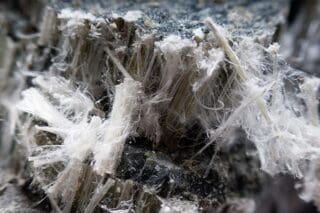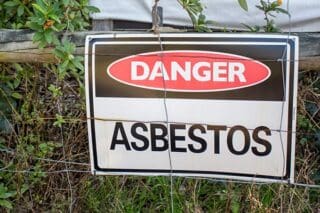
Researchers have looked at the relationship between children, asbestos exposure and mesothelioma. Researchers in one study stated children exposed to asbestos are more likely to develop mesothelioma than adults exposed to asbestos.
A newer study collected a large sample of children and adults to confirm or contradict this statement. The study did have different findings. It concluded children may be more resilient to asbestos than adults. However, research in this area is limited.
Researching Children and Asbestos Exposure
In some mesothelioma studies, researchers have looked specifically at mesothelioma in children compared to adults. There are not many studies, as most patients are diagnosed later in life.
As a rare cancer, mesothelioma studies are limited. Researchers continue to look at causes, development and treatment of the condition. They also look at connections with age, gender, genetic disposition and other patient characteristics.
Are Children More at Risk of Mesothelioma?
Previous research indicated children exposed to asbestos may be 3.5 times more at risk of mesothelioma than asbestos-exposed adults. This was from the UK’s Committee on Carcinogenicity. The researchers used age 5 and age 25 as markers for children and adults, respectively.
Other research has contradicted this finding. One example is an Australian study of 4,704 former Wittenoom, Australia residents. The study found children may be more resilient to the carcinogenic effects of asbestos than adults. However, more research is needed.
The study collected data from 1943 to 2017. Of the 4,704 total study participants, 2,439 were first exposed to asbestos as children. The study collected a series of data points, including:
- When they resided at Wittenoom
- Estimated time period of asbestos exposure (done with periodic air quality tests)
- If they were children when they resided in Wittenoom and were exposed*
- Number of reported mesothelioma cases from surveys and national death and statistic registries
*Participants were classified as children if they were under 15 years of age. Individuals were allowed to work at asbestos mines if they were 15 years of age or older.
The researchers stopped following participants after they died, were diagnosed or turned 85 years of age (whichever came first).
Survival & Mesothelioma Rate in Children vs. Adults
The study concluded differences in survival and mesothelioma rate for children* compared to adults. First, they found children faced more asbestos exposure than adults. Additional findings included:
- Survival by the end of the study was better for children than for adults (88% of children and 58% of adults were still alive at the end of the study)
- The rate of mesothelioma was higher for adults than for children (mesothelioma rate was 60% higher for adults)
*Within this study, “children” refers to the individuals first exposed to asbestos as a child (under 15). “Adult” refers to the individuals first exposed to asbestos as an adult (15 and older).
The study concluded adult exposure results in 2.5 times the risk of developing mesothelioma versus childhood exposure.
Data Limitations for Childhood Exposure
The UK Committee on Carcinogenicity’s statement and the Australian study’s findings were contradictory. More research is needed for a definitive understanding of mesothelioma risk for children.
The prevalence of asbestos in Wittenoom allowed researchers to pinpoint exposure. However, asbestos exposure can occur from various occupations, products or through secondary exposure. As a result, it can be difficult to identify how an individual was exposed as well.
Why Is It Important to Study Mesothelioma in Children?
Asbestos in schools continues to be a large concern across the world. Many schools in the United States were built prior to 1979. Before 1979, asbestos was frequently incorporated into building materials and other products.
As schools age, teachers, children and other workers may face exposure. For example, fibers can be released from damaged ceiling tiles, floor tiles or drywall. If children are exposed to asbestos in the classroom, they risk mesothelioma, asbestosis, lung cancer and other related diseases.
Advocates for asbestos safety continue to push for stricter regulations. One goal for advocates is to ensure children are safe from the dangers of asbestos.




